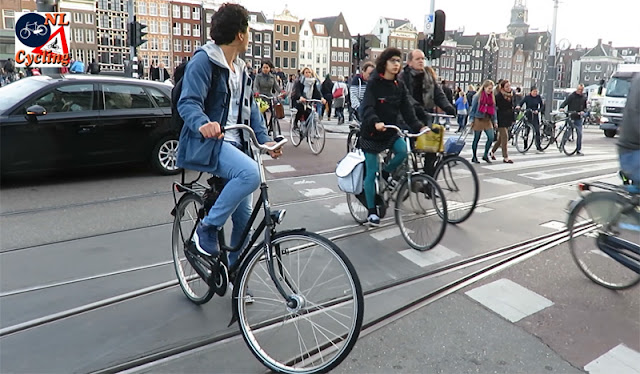Cycling And Walking Could Solve America's Public-Health Crisis
However, the 409-page Benchmarking Report shows with stats and graphics the increasing number of bicyclists and pedestrians being killed annually on America’s roads. The report claims a lack of leadership by federal and state leaders on road safety has failed to make improvements in bicyclist and pedestrian safety.
“The way we’re investing in infrastructure isn’t working,” said League policy director Ken McLeod, lead author of the report.
“There is a crisis in traffic safety and we have the tools to reduce the number of bicyclists and pedestrians killed on our roads every year.”
McLeod added: “We need leaders at the national and state levels to take action: adopt Complete Streets policies, draft and implement bike and pedestrian master plans, and build protected infrastructure.”
“While the state and safety of bicycling and walking may seem dire, it’s not all bad news. The data shows there are places like Oregon, Minneapolis, and Washington, DC, where officials are working with advocates on the ground to create communities that are more welcoming for bicyclists and pedestrians. Local bike advocates are working to meet their communities’ needs and make biking better.”
Produced with support from the Centers for Disease Control and Prevention, retiree organization AARP, and Toole Design Group, the 2018 Benchmarking Report shows the urgency to encourage healthy living options. 75-150 minutes of moderate to vigorous physical activity per week can lead to health benefits and may help prevent obesity, hypertension, diabetes, and asthma, says the report.
Mississippi is highlighted in the report as the deadliest state for bicyclists yet the Magnolia State also has the lowest percent of commuters biking to work in 2016 at just 0.1% of the population.
Conversely, cities where the rate of cycling to work is highest – such as Portland, Oregon – have the lowest rate of bicyclist fatalities.
Oregon has the nation’s lowest rate of bicyclist fatalities per bike commuter (1.7 deaths per 10,000 bicycle commuters), with a 30.9% decrease in the number of bicyclist fatalities (from an average of 11 deaths per year from 2007-11 to 7.6 deaths per year from 2012-2016) and a 46.5% increase in the number of bicycle commuters (from 29,156 in 2007 to 42,725 in 2016).
The League claims that this suggests that “bicyclist and pedestrian fatalities are not inevitable when people bike and walk more but may be reduced through proactive policy, infrastructure, education, and other community investments in bicycling and walking.”
READ FULL REPORT HERE >> Forbes February 8, 2019




Comments
Post a Comment